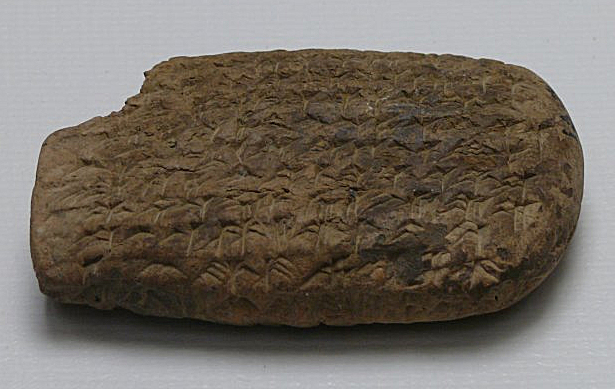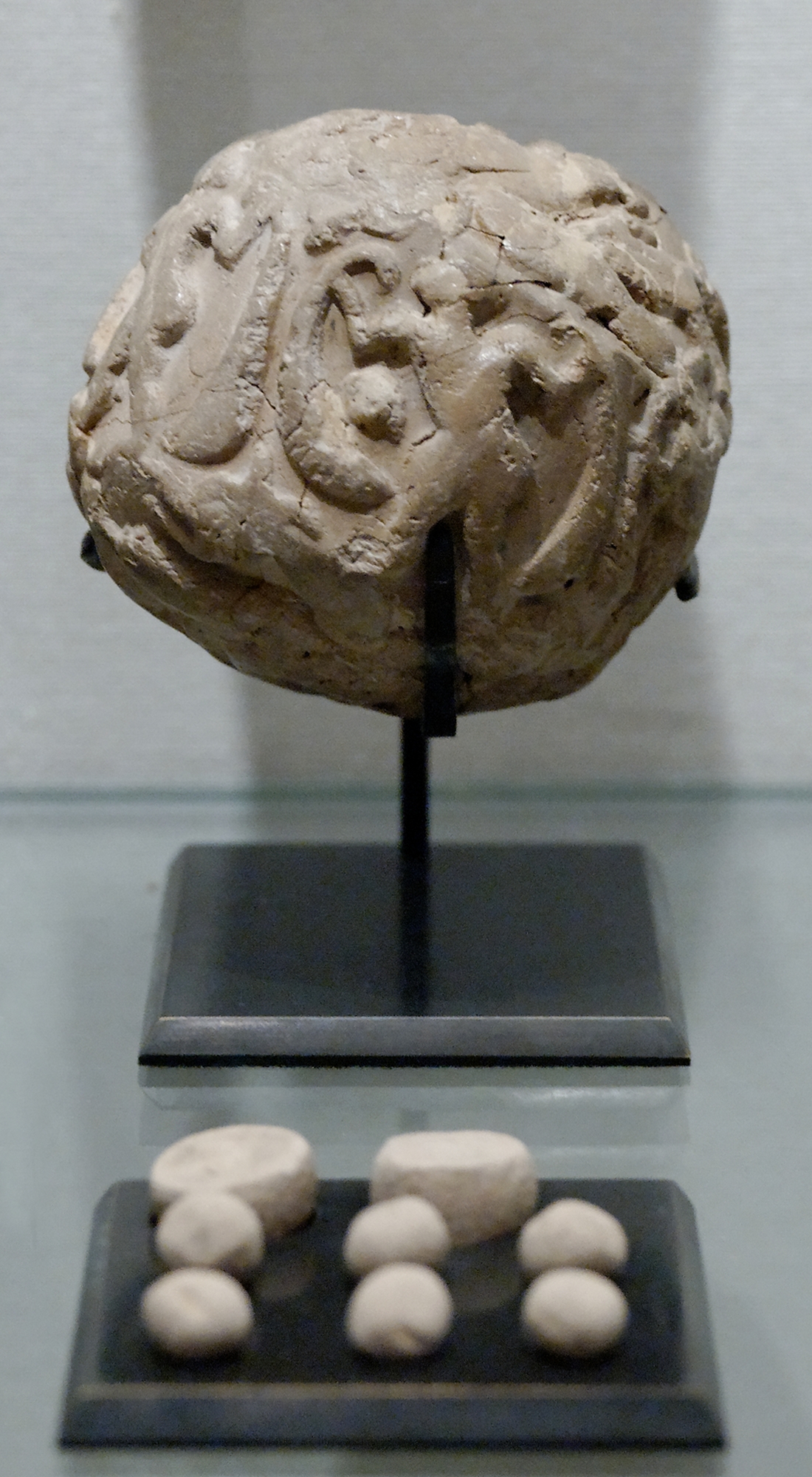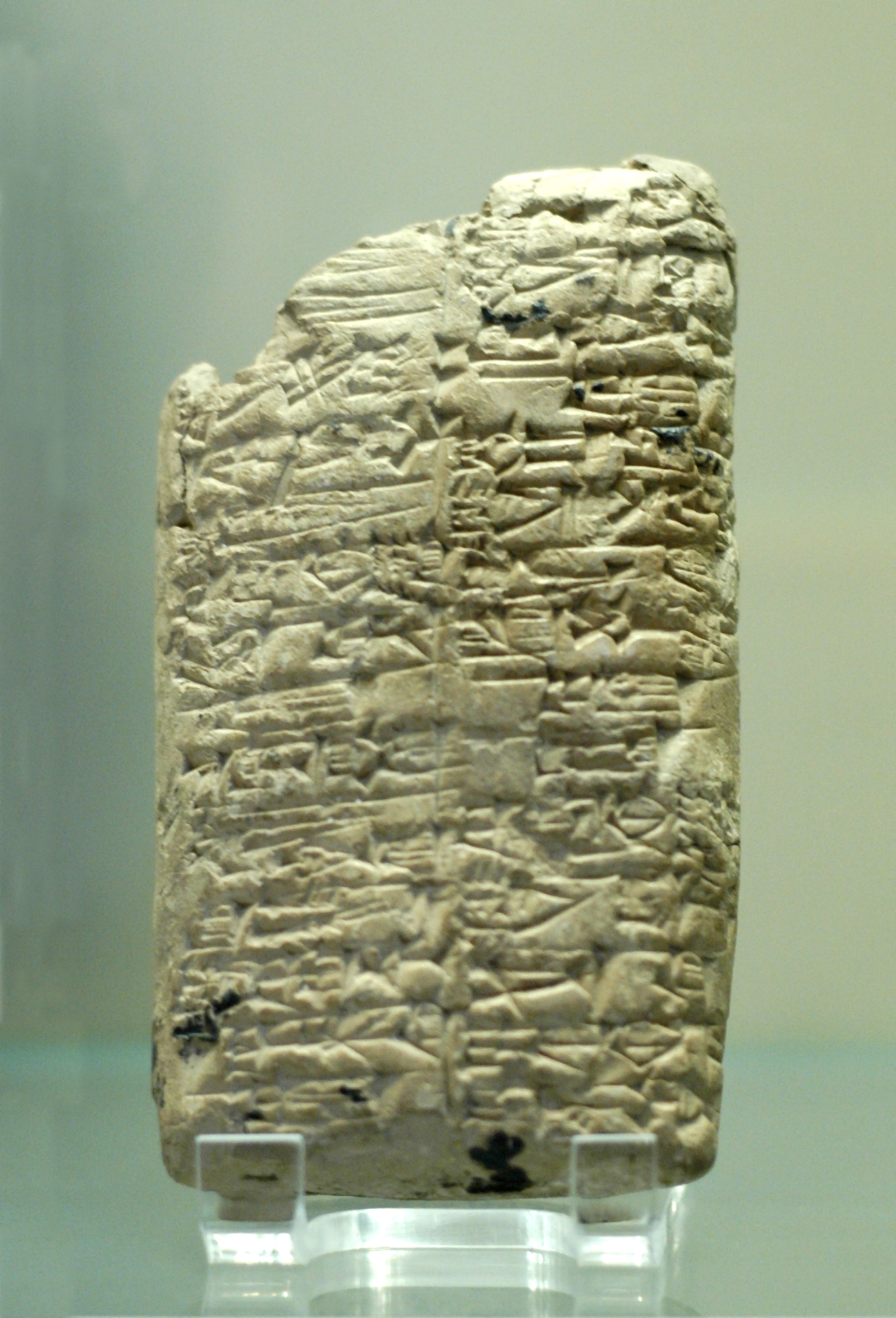|
Persepolis Fortification Archive
The Persepolis Administrative Archive (also Fortification Archive or Treasury Archive) are two groups of clay administrative archives — sets of records physically stored together – found in Persepolis dating to the Achaemenid Persian Empire. The discovery was made during legal excavations conducted by the archaeologists from the Oriental Institute of the University of Chicago in the 1930s. Hence they are named for their in situ findspot: Persepolis. The archaeological excavations at Persepolis for the Oriental Institute were initially directed by Ernst Herzfeld from 1931 to 1934 and carried on from 1934 until 1939 by Erich Schmidt.Henkelman 2008:Ch 2. While the political end of the Achaemenid Empire is symbolized by the burning of Persepolis by Alexander the Great (dated 330/329 BCE), the fall of Persepolis paradoxically contributed to the preservation of the Achaemenid administrative archives that might have been lost due to passage of time and natural and man-made cau ... [...More Info...] [...Related Items...] OR: [Wikipedia] [Google] [Baidu] |
Persepolis Tablet
Persepolis (; ; ) was the ceremonial capital of the Achaemenid Empire (). It is situated in the plains of Marvdasht, encircled by the southern Zagros mountains, Fars province of Iran. It is one of the key Iranian cultural heritage sites and a UNESCO World Heritage Site. The earliest remains of Persepolis date back to 515 BC. The city, acting as a major center for the empire, housed a palace complex and citadel designed to serve as the focal point for governance and ceremonial activities. It exemplifies the Achaemenid style of architecture. The complex was taken by the army of Alexander the Great in 330 BC, and soon after, its wooden parts were completely destroyed by fire, likely deliberately. The function of Persepolis remains unclear. It was not one of the largest cities in ancient Iran, let alone the rest of the empire, but appears to have been a grand ceremonial complex that was only occupied seasonally; the complex was raised high on a walled platform, with five "palaces ... [...More Info...] [...Related Items...] OR: [Wikipedia] [Google] [Baidu] |
Artaxerxes I
Artaxerxes I (, ; ) was the fifth King of Kings of the Achaemenid Empire, from 465 to December 424 BC. He was the third son of Xerxes I. In Greek sources he is also surnamed "Long-handed" ( ''Makrókheir''; ), allegedly because his right hand was longer than his left. Josephus, and several ancient traditions identify him as Ahasuerus#Identification of "Ahasuerus" as Artaxerxes I, King Ahasuerus, from the Book of Esther. Succession to the throne Artaxerxes was probably born in the reign of his grandfather Darius I, to the emperor's son and heir, Xerxes I. In 465 BC, Xerxes I was murdered by ''Hazarapat'' ("commander of thousand") Artabanus of Persia, Artabanus, the commander of the royal bodyguard and the most powerful official in the Persian court, with the help of a eunuch, Aspamitres. Greek historians give contradicting accounts of events. According to Ctesias (in ''Persica'' 20), Artabanus then accused Darius (son of Xerxes I), Crown Prince Darius, Xerxes's eldest ... [...More Info...] [...Related Items...] OR: [Wikipedia] [Google] [Baidu] |
Khuzestan
Khuzestan province () is one of the 31 Provinces of Iran. Located in the southwest of the country, the province borders Iraq and the Persian Gulf, covering an area of . Its capital is the city of Ahvaz. Since 2014, it has been part of Iran's Region 4. Etymology Once one of the most critical regions of the Ancient Near East, Khuzestan comprises much of what historians refer to as ancient Elam, whose capital was in Susa. The Old Persian term for Elam was when they conquered it from the Elamites. This element is present in the modern name. Khuzestan, meaning "the Land of the Khuz," refers to the original inhabitants of this province. In the Achaemenid Empire, this term is ''Huza'' or ''Huja'', as in the inscription on the tomb of Darius the Great at Naqsh-e Rostam. They are the "Shushan" of Hebrew sources, a borrowing from Elamite ''Šuša''. In Middle Persian, the term evolved into "Khuz" and "Kuzi." The pre-Islamic Partho-Sasanian inscriptions give the province the na ... [...More Info...] [...Related Items...] OR: [Wikipedia] [Google] [Baidu] |
Aramaic Script
Aramaic (; ) is a Northwest Semitic language that originated in the ancient region of Syria and quickly spread to Mesopotamia, the southern Levant, Sinai, southeastern Anatolia, and Eastern Arabia, where it has been continually written and spoken in different varieties for over three thousand years. Aramaic served as a language of public life and administration of ancient kingdoms and empires, particularly the Neo-Assyrian Empire, Neo-Babylonian Empire, and Achaemenid Empire, and also as a language of divine worship and religious study within Judaism, Christianity, and Gnosticism. Several modern varieties of Aramaic are still spoken. The modern eastern branch is spoken by Assyrians, Mandeans, and Mizrahi Jews.{{cite book , last1=Huehnergard , first1=John , author-link1=John Huehnergard , last2=Rubin , first2=Aaron D. , author-link2=Aaron D. Rubin , date=2011 , editor-last=Weninger , editor-first=Stefan , title=The Semitic Languages: An International Handbook , publis ... [...More Info...] [...Related Items...] OR: [Wikipedia] [Google] [Baidu] |
Official Aramaic
Imperial Aramaic is a linguistic term, coined by modern scholars in order to designate a specific historical variety of Aramaic language. The term is polysemic, with two distinctive meanings, wider (sociolinguistic) and narrower (dialectological). Since most surviving examples of the language have been found in Egypt, the language is also referred to as Egyptian Aramaic. Some scholars use the term as a designation for a distinctive, socially prominent phase in the history of Aramaic language, that lasted from the middle of the 8th century BCE to the end of the 4th century BCE and was marked by the use of Aramaic as a language of public life and administration in the late Neo-Assyrian Empire and its successor states, the Neo-Babylonian Empire and the Achaemenid Empire, also adding to that some later (Post-Imperial) uses that persisted throughout the early Hellenistic period. Other scholars use the term ''Imperial Aramaic'' in a narrower sense, reduced only to the Achaemenid period ... [...More Info...] [...Related Items...] OR: [Wikipedia] [Google] [Baidu] |
Cuneiform
Cuneiform is a Logogram, logo-Syllabary, syllabic writing system that was used to write several languages of the Ancient Near East. The script was in active use from the early Bronze Age until the beginning of the Common Era. Cuneiform scripts are marked by and named for the characteristic wedge-shaped impressions (Latin: ) which form their Grapheme, signs. Cuneiform is the History of writing#Inventions of writing, earliest known writing system and was originally developed to write the Sumerian language of southern Mesopotamia (modern Iraq). Over the course of its history, cuneiform was adapted to write a number of languages in addition to Sumerian. Akkadian language, Akkadian texts are attested from the 24th century BC onward and make up the bulk of the cuneiform record. Akkadian cuneiform was itself adapted to write the Hittite language in the early second millennium BC. The other languages with significant cuneiform Text corpus, corpora are Eblaite language, Eblaite, Elamit ... [...More Info...] [...Related Items...] OR: [Wikipedia] [Google] [Baidu] |
Elamite Language
Elamite, also known as Hatamtite and formerly as Scythic, Median, Amardian, Anshanian and Susian, is an extinct language that was spoken by the ancient Elamites. It was recorded in what is now southwestern Iran from 2600 BC to 330 BC. Elamite is generally thought to have no demonstrable relatives and is usually considered a language isolate. The lack of established relatives makes its interpretation difficult. A sizeable number of Elamite lexemes are known from the Achaemenid royal inscriptions – trilingual inscriptions of the Achaemenid Empire, in which Elamite was written using Elamite cuneiform (circa 5th century BC), which is fully deciphered. An important dictionary of the Elamite language, the ''Elamisches Wörterbuch'' was published in 1987 by W. Hinz and H. Koch. The Linear Elamite script however, one of the scripts used to write the Elamite language circa 2000 BC, has remained elusive until recently. in Writing system The following scripts are known or assumed to h ... [...More Info...] [...Related Items...] OR: [Wikipedia] [Google] [Baidu] |
Macedonians (ethnic Group)
Macedonians ( ) are a nation and a South Slavic ethnic group native to the region of Macedonia in Southeast Europe. They speak Macedonian, a South Slavic language. The large majority of Macedonians identify as Eastern Orthodox Christians, who share a cultural and historical "Orthodox Byzantine–Slavic heritage" with their neighbours. About two-thirds of all ethnic Macedonians live in North Macedonia; there are also communities in a number of other countries. The concept of a Macedonian ethnicity, distinct from their Orthodox Balkan neighbours, is seen to be a comparatively newly emergent one. The earliest manifestations of an incipient Macedonian identity emerged during the second half of the 19th century among limited circles of Slavic-speaking intellectuals, predominantly outside the region of Macedonia. They arose after the First World War and especially during the 1930s, and thus were consolidated by Communist Yugoslavia's governmental policy after the Second World ... [...More Info...] [...Related Items...] OR: [Wikipedia] [Google] [Baidu] |
Bulla (seal)
A bulla (Medieval Latin for "a round seal", from Classical Latin ''bulla'', "bubble, blob"; plural bullae) is an inscribed clay, soft metal (lead or tin), bitumen, or wax token used in commercial and legal documentation as a form of authentication and for tamper-proofing whatever is attached to it (or, in the historical form, contained in it). In their oldest attested form, as used in the ancient Near East and the Middle East of the 8th millennium BC onwards, bullae were hollow clay balls that contained other smaller tokens that identified the quantity and types of goods being recorded. In this form, bullae represent one of the earliest forms of specialization in the ancient world, and likely required skill to create. From about the 4th millennium BC onwards, as communications on papyrus and parchment became widespread, bullae evolved into simpler tokens that were attached to the documents with cord, and impressed with a unique sign (i.e., a seal) to provide the same kind of author ... [...More Info...] [...Related Items...] OR: [Wikipedia] [Google] [Baidu] |
Richard Hallock
Richard Treadwell Hallock (5 April 1906 in Passaic, New Jersey – 20 November 1980 in Chicago) was an American Assyriologist and Elamitologist. He reached his Ph.D. degree in Assyriology at the University of Chicago in 1935, and was editorial secretary of the Chicago Assyrian Dictionary (1955–1957). His major work is Persepolis Fortification Tablets' (1969), the first edition and translation of the Persepolis Fortification Archive. In 1972, he was elected a corresponding fellow of the British Academy. Hallock also played an instrumental role in the Venona project. While working on Soviet "Trade" traffic (so named because these messages dealt with Soviet trade issues), Hallock discovered that the Soviets were reusing pages of some of the one-time pads they relied upon to encrypt their messages. Hallock and his colleagues (including Genevieve Feinstein, Cecil Phillips, Frank Lewis, Frank Wanat, and Lucille Campbell) went on to break into a significant amount of trade traf ... [...More Info...] [...Related Items...] OR: [Wikipedia] [Google] [Baidu] |
Elamite
Elamite, also known as Hatamtite and formerly as Scythic, Median, Amardian, Anshanian and Susian, is an extinct language that was spoken by the ancient Elamites. It was recorded in what is now southwestern Iran from 2600 BC to 330 BC. Elamite is generally thought to have no demonstrable relatives and is usually considered a language isolate. The lack of established relatives makes its interpretation difficult. A sizeable number of Elamite lexemes are known from the Achaemenid royal inscriptions – trilingual inscriptions of the Achaemenid Empire, in which Elamite was written using Elamite cuneiform (circa 5th century BC), which is fully deciphered. An important dictionary of the Elamite language, the ''Elamisches Wörterbuch'' was published in 1987 by W. Hinz and H. Koch. The Linear Elamite script however, one of the scripts used to write the Elamite language circa 2000 BC, has remained elusive until recently. in Writing system The following scripts are known or assumed to h ... [...More Info...] [...Related Items...] OR: [Wikipedia] [Google] [Baidu] |
Clay Tablet
In the Ancient Near East, clay tablets (Akkadian language, Akkadian ) were used as a writing medium, especially for writing in cuneiform, throughout the Bronze Age and well into the Iron Age. Cuneiform characters were imprinted on a wet clay tablet with a stylus often made of Reed (plant), reed (reed pen). Once written upon, many tablets were dried in the sun or air, remaining fragile. Later, these unfired clay tablets could be soaked in water and recycled into new clean tablets. Other tablets, once written, were either deliberately fired in hot kilns, or inadvertently fired when buildings were burnt down by accident or during conflict, making them hard and durable. Collections of these clay documents made up the first archives. They were at the root of the first library, libraries. Tens of thousands of written tablets, including many fragments, have been found in the Middle East. Most of the documents on tablets that survive from the Minoan civilization, Minoan and Mycenaean ... [...More Info...] [...Related Items...] OR: [Wikipedia] [Google] [Baidu] |










